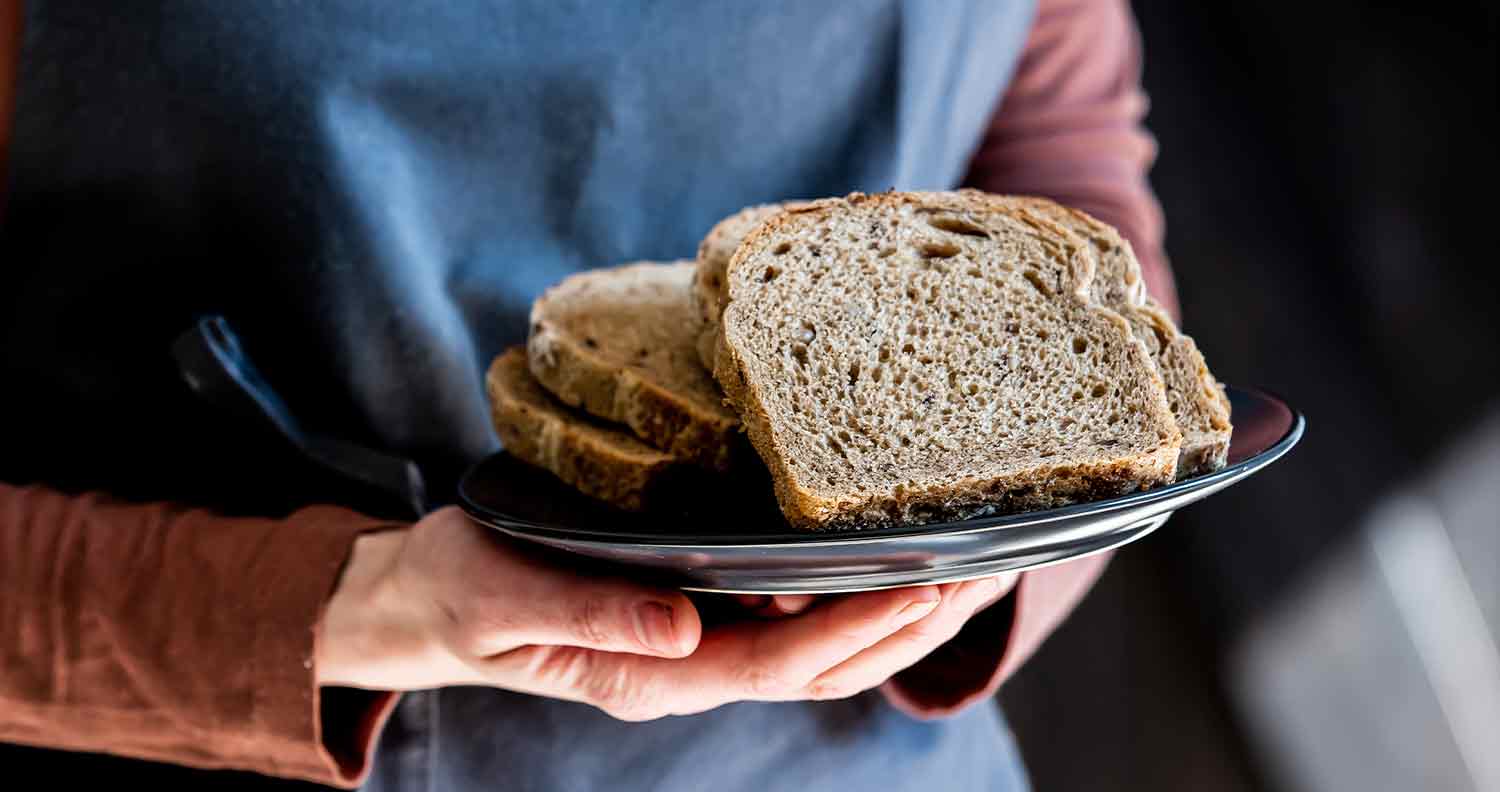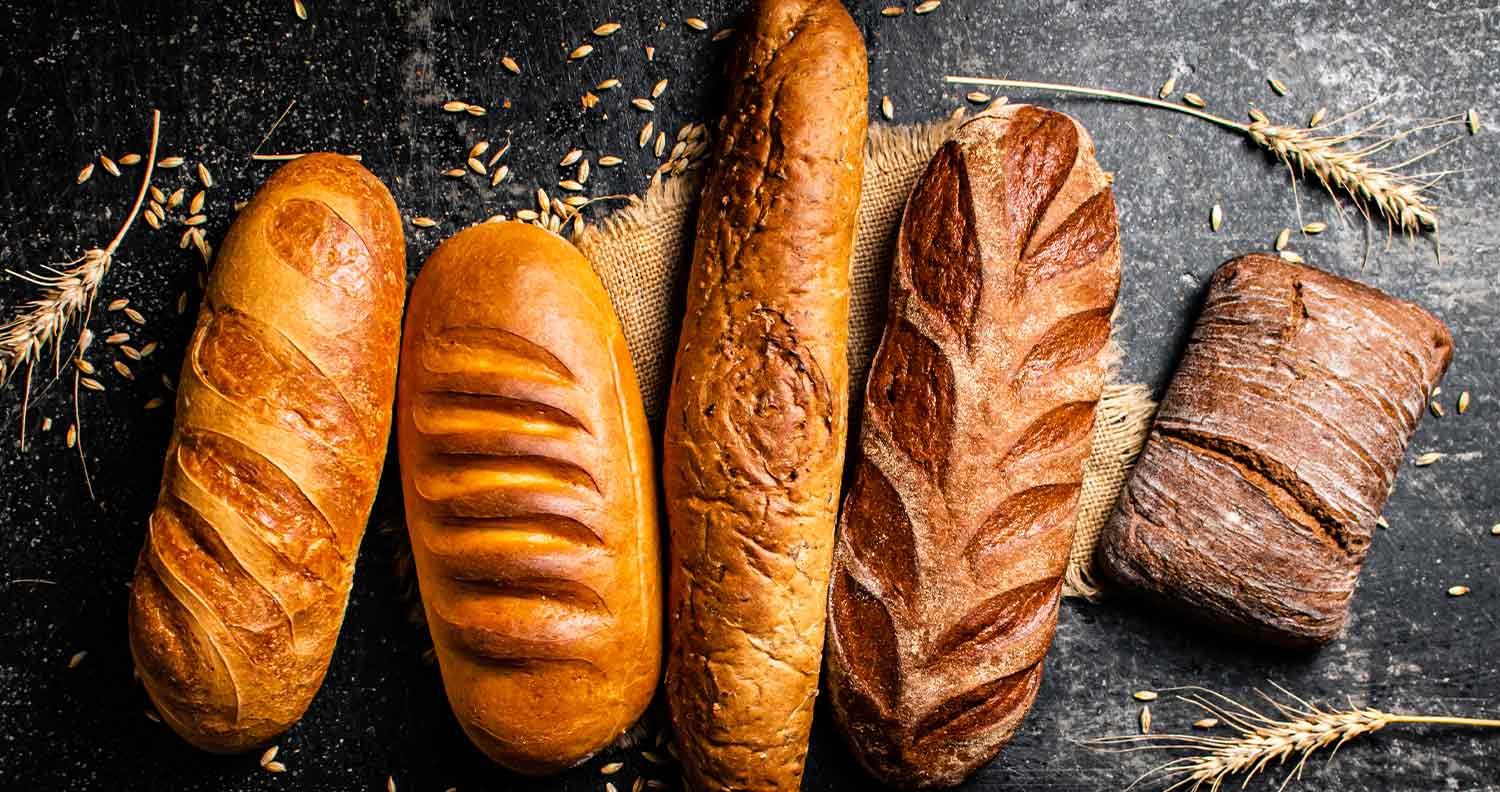Can Cats Eat Bread? (Or is it Bad For Them?)
Share:
Bread is one of the staple foods in most diets around the world. It can be eaten as toast, pizza, crust, garlic bread, or simply made into tasty sandwiches.
Based on the kind of bread you use and the ingredients that go into the snack, bread can be a healthy addition to your diet.

Read this next: Can Cats Eat Garlic? (Or Is It Toxic For Kitties?)
But does that extend to your cat as well?
Can your feline friend be allowed to eat a small piece of bread?
Can Cats Eat Bread?
The short answer is yes.
But it’s important to note that, as with all human food, bread should also be given in small quantities. Baked bread is not a substitute for proper cat and kitten meals and should only be given as a treat on occasion.
Is Bread Good For Cats?
There is nothing in bread that is inherently harmful to cats. However, bread does not have the nutrients your feline friend would require to remain healthy.
So, substituting their regular meals with bread would be a bad idea.
Bread also contains just empty calories. A slice of bread gives your cat a fifth of the calories it would require to function every day. So, essentially, two slices of bread would be more than enough to fill your cat’s tummy.
But that would not help in terms of meeting its nutritional needs.
One of the advantages of bread is that it can help you trick your cat into taking its medication. You can hide a pill in the bread or even pour some of the liquid medicine your cat needs to take onto the bread.
This could work, considering most cats avoid any food that has medication in it due to the bitter taste.
But cats that like eating bread can be tricked into taking their medication this way. Wet food is still the best way to give your cat medication.
But if your feline friend loves bread, it could be your go-to option.

Is Bread Bad for Cats in Any Way?
You should make sure the bread you give your cat is not uncooked.
This can be bad for your feline friend. Raw bread dough can be poisonous as it would expand in your cat’s stomach.
It would result in dangerous bloating and an inflated stomach.
Not only is that a major discomfort for your cat, but in some cases can also be life-threatening.
When you give your cat bread, you should also make sure it’s not flavored. If your bread has been flavored with tomatoes, chives, leeks, garlic, or onions, your cat should eat no part of it.
Garlic is part of the allium family and alliums are EXTREMELY toxic to cats.
Such flavoring would be toxic to your cat and could end up causing life-threatening issues such as seizures and respiratory failure.
Even herbs and spices can end up being dangerous. It’s always best to check with the vet before you choose to feed any human food to your cat.
Whatever bread you give your cat should be baked bread. Instead, if you give bread dough that has active yeast in it, that will be harmful to your cat.
Even in small amounts, yeast can be dangerous.
When a bit of the dough is eaten by your cat, it immediately generates carbon dioxide and alcohol.
This would cause a lot of distress to your feline friend.
In some instances, you might even have to resort to surgery to remove the mass of dough from your cat’s stomach.
As alcohol gets released from the yeast, it can also mean your cat would get intoxicated. The alcohol gets right into their bloodstream.
This should be avoided at all costs. It can be fatal to your cat.

Read this next: How To Give Your Cat Medicine Properly!
Is Bread Healthy for Cats?
Cats are not animals that can just rely on vegetarian options. They’re carnivores and need a meat-based diet to get all the nutrients they need.
Even your cat’s digestive system has evolved to process meat. So giving your cat meat and other such cat food would be the best option.
Bread, for instance, would offer no nutritional value whatsoever. The calories that bread gives your cat would also mean it would not want to eat anything else.
Your cat should get at least 90% of its calories from meat-based food.
Commercial food products for cats are formulated in such a way that they give the maximum benefit to your feline friend.
Hot to Feed Your Cat Bread
Before you even let your cat near any bread, you should first talk to the vet. Any change to the cat’s diet could cause weight gain and should be first discussed with your vet.
You should then do a little math.
This is because you want to make sure the calories your cat is getting from bread are just 10% of the total.
Each cat’s calorie intake would differ. So, if your vet recommends that your cat should get 250 calories every day, you can’t load all of that with bread.
You should make sure that only 25 calories come from bread on any given day.
This, of course, does not mean you give your cat bread every day. The one or two odd occasions that you let your cat have bread should still be as low as 25 calories.
You would usually get all the calorie information from the bread packaging. You can then determine how many calories a slice of bread would have and portion out a piece of the slice to your cat.
Once you determine how much bread your cat is allowed to eat, tear the bread into small pieces.
This way your cat won’t have any problems while trying to chew and swallow. If the size of the bread pieces is too big, it can become a choking hazard.
After your cat eats the bread, monitor it for any signs of distress.
If they show symptoms of vomiting, diarrhea, a distended stomach, lethargy, or weakness then it would be best not to give them bread ever again.
Clearly, your cat is suffering adverse effects from eating the bread. If it persists or turns serious, take your cat to the vet as soon as you can.

Read this next: How Much Should I Feed my Cat? A Simple Cat Feeding Guide
Can Cats Eat Bread? Summary
While baked bread is not harmful to your cat, it’s still something to avoid adding to its diet. You’re better off with regular wet and dry cat food.
If you must give your cat bread, make sure it’s on rare occasions and that too a very minimal amount. Just ensure you feed them a diet of quality solid foods and avoid obesity at all costs.
Share:

